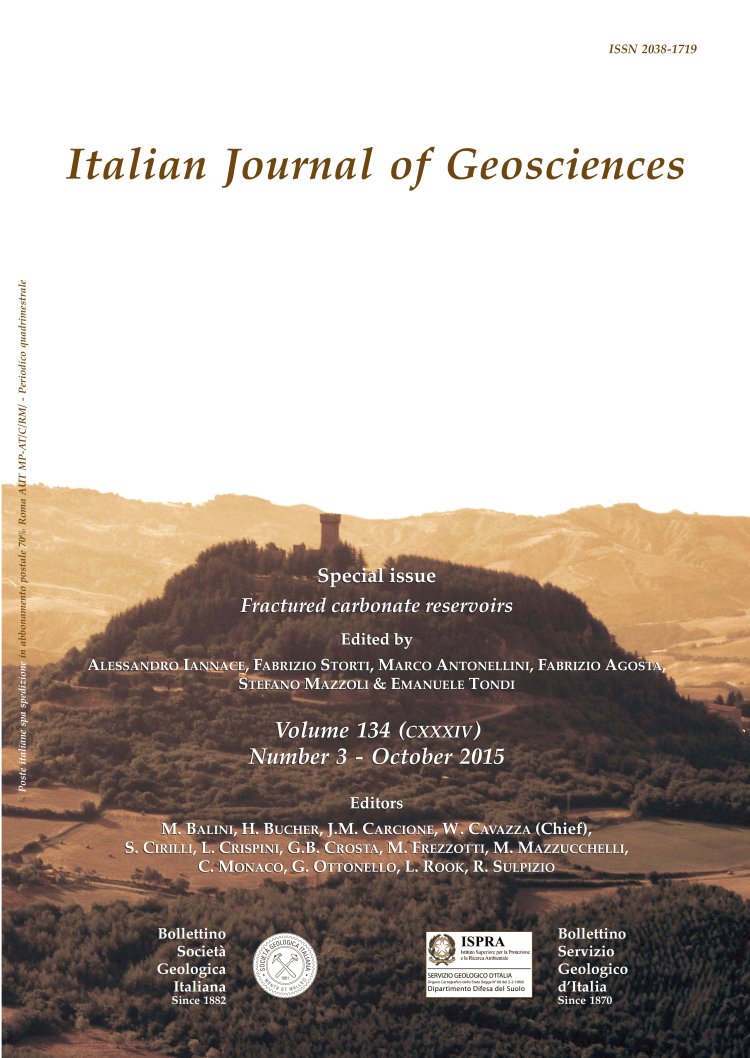
Extensional fold-related fracturing in the Armeña rollover (Cotiella Massif, Southern Pyrenees)
Stefano Tavani (*), Berta López-Mir (**) (***) & Josep A. Muñoz (**)
(*) Dipartimento di Scienze della Terra, dell'Ambiente e delle Risorse, Università di Napoli Federico II. Largo San Marcellino, 10 - 80138 Napoli, Italy. +39 081 2538155. Corresponding author e-mail: stefano.tavani@unina.it
(**) Geomodels, Departament de Geodínamica i Geofísica, Facultat de Geologia, Universitat de Barcelona, Barcelona, Spain.
(***) CASP, Department of Earth Sciences, University of Cambridge, Cambridge, UK.
Volume: 134 (2015) f.3
Pages: 458-473
Abstract
The Cotiella Upper Cretaceous Basins in the central southern Pyrenees host an outstandingly exposed extensional fault system and related folds which developed by the extensional gravitational collapse of the post-rift carbonate platform above relic Upper Triassic salt at the southern margin of the Bay of Biscay-Pyrenean rift system.
Among the Cotiella extensional structures, the Armeña rollover involves more than 3 km of middle Coniacian to lower Santonian wedge-shaped syn-kinematic sediments which are overlying upper Albian to lower Coniacian pre-kinematic strata detached above an Upper Triassic salt layer. Although the rollover was partially inverted during the Pyrenean orogeny, its first order extensional architecture and the associated syn-extensional fracture pattern are well preserved.
Both the hanging-wall and foot-wall of the NE-dipping Armeña fault exposes two sets of bed-perpendicular joints which oriented about parallel (longitudinal) and perpendicular (transverse) to the fault, respectively. Spatial distribution and reactivation pattern of longitudinal joints indicate their early to syn-folding origin, where widespread longitudinal jointing occurred firstly as part of the regional extensional framework, affecting the entire rock volume with a rather constant density. Later, laterally decreasing fault-propagation rate caused the development of a hanging-wall syncline, preferentially developed at the lateral termination of the rollover.
There, folding of strata above the slowly propagating fault's tip was ensured by development of further longitudinal joints that underwent shearing during the later stage of fault-propagation.
Among the Cotiella extensional structures, the Armeña rollover involves more than 3 km of middle Coniacian to lower Santonian wedge-shaped syn-kinematic sediments which are overlying upper Albian to lower Coniacian pre-kinematic strata detached above an Upper Triassic salt layer. Although the rollover was partially inverted during the Pyrenean orogeny, its first order extensional architecture and the associated syn-extensional fracture pattern are well preserved.
Both the hanging-wall and foot-wall of the NE-dipping Armeña fault exposes two sets of bed-perpendicular joints which oriented about parallel (longitudinal) and perpendicular (transverse) to the fault, respectively. Spatial distribution and reactivation pattern of longitudinal joints indicate their early to syn-folding origin, where widespread longitudinal jointing occurred firstly as part of the regional extensional framework, affecting the entire rock volume with a rather constant density. Later, laterally decreasing fault-propagation rate caused the development of a hanging-wall syncline, preferentially developed at the lateral termination of the rollover.
There, folding of strata above the slowly propagating fault's tip was ensured by development of further longitudinal joints that underwent shearing during the later stage of fault-propagation.
Keywords
Get Full Text